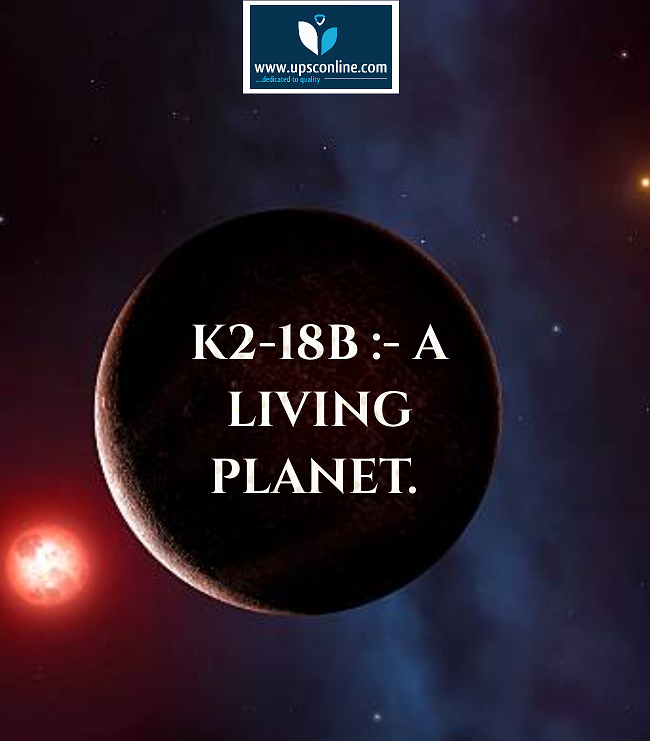K2-18 b is a super Earth exoplanet that orbits an M-type star. It takes 32.9 days to complete one orbit of its star, and is 0.1429 AU from its star. Its discovery was announced in 2015.
A new investigation with NASA’s James Webb Space Telescope into K2-18 b, an exoplanet 8.6 times as massive as Earth, has revealed the presence of carbon-bearing molecules including methane and carbon dioxide.
Webb’s discovery suggested that K2-18 b could be a c, one which has the potential to possess a hydrogen-rich atmosphere and a water ocean-covered surface.
The planet’s name is K2-18b, meaning it is the first planet in the 18th planetary system found by the extended NASA Kepler mission, K2. Astronomers assign the “b” label to the first planet in the system, not “a,” to avoid possible confusion with the star.
It’s only about half as dense as Earth. In other words, it must have a lot of water, which isn’t very dense, or a very big atmosphere, which is even less dense.
Astronomers thought that this could either be a smaller version of our solar system’s ice giant Neptune, called a mini-Neptune, or perhaps a rocky planet with no water but a massive hydrogen atmosphere, called a gas dwarf.
Mini-Neptunes and gas dwarfs are not to be hospitable for life, because they probably don’t have liquid water, and their interior surfaces have enormous pressures. But a hycean planet would have a large and likely temperate ocean.
K2-18 b orbits the cool dwarf star K2-18 in the habitable zone at 120 light-years distance from Earth in the constellation Leo. Exoplanets such as K2-18 b, which have sizes between those of Earth & Neptune, are unlike anything in our solar system.
These ‘sub-Neptunes’ are poorly understood, and the nature of their atmospheres is a matter of active debate among astronomers.
A “hycean planet” is a type of exoplanet, a planet outside of our solar system, characterized by a thick hydrogen-rich atmosphere and a global ocean, making them potential candidates for habitability. The name “Hycean” is derived from the words “hydrogen” and “ocean”
The suggestion that the sub-Neptune K2-18 b could be a Hycean exoplanet is intriguing, as some astronomers believe that these worlds are promising environments to search for evidence for life on exoplanets.
According to Nikku Madhusudhan, an astronomer at the University of Cambridge these findings underscore the importance of considering diverse habitable environments in the search for life elsewhere.
Traditionally, the search for life on exoplanets has focused primarily on smaller rocky planets, but the larger Hycean worlds are significantly more conducive to atmospheric observations. The abundance of methane and carbon dioxide, and shortage of ammonia, support the hypothesis that there may be a water ocean underneath a hydrogen-rich atmosphere in K2-18 b. There is a possible detection of a molecule called dimethyl sulfide (DMS)..
On Earth, this is only produced by life. The bulk of the DMS in Earth’s atmosphere is emitted from phytoplankton in marine environments.The inference of DMS is less robust and requires further validation.
According to Madhusudan, Upcoming Webb observations should be able to confirm if DMS is indeed present in the atmosphere of K2-18 b at significant levels.
While K2-18 b lies in the habitable zone, and is now known to harbor carbon-bearing molecules, this does not necessarily mean that the planet can support life.
The planet’s large size — with a radius 2.6 times the radius of Earth — means that the planet’s interior likely contains a large mantle of high-pressure ice, like Neptune, but with a thinner hydrogen-rich atmosphere and an ocean surface.
It is also possible that the ocean is too hot to be habitable or be liquid. According to Subhajit Sarkar of Cardiff University, although this kind of planet does not exist in our solar system, sub-Neptunes are the most common type of planet known so far in the galaxy,” “We have obtained the most detailed spectrum of a habitable-zone sub-Neptune to date, and this allowed us to work out the molecules that exist in its atmosphere.”
Characterizing the atmospheres of exoplanets like K2-18 b — meaning identifying their gases & physical conditions — is a very active area in astronomy. However, these planets are outshone — literally — by the glare of their much larger parent stars, which makes exploring exoplanet atmospheres particularly challenging.
K2-18 b is a transiting exoplanet, meaning that we can detect a drop in brightness as it passes across the face of its host star. This is how the exoplanet was first discovered in 2015 with NASA’s K2 mission.
This means that during transits a tiny fraction of starlight will pass through the exoplanet’s atmosphere before reaching telescopes like Webb.
The starlight’s passage through the exoplanet atmosphere leaves traces that astronomers can piece together to determine the gases of the exoplanet’s atmosphere.
According to Madhusudan, this result was only possible because of the extended wavelength range and unprecedented sensitivity of Webb, which enabled robust detection of spectral features with just two transits,”.
For comparison, one transit observation with Webb provided comparable precision to eight observations with Hubble conducted over a few years and in a relatively narrow wavelength range.
These results are the product of just two observations of K2-18 b, with many more on the way,” explained team member Savvas Constantinou of the University of Cambridge. “This means our work here is but an early demonstration of what Webb can observe in habitable-zone exoplanets.” The team’s results were accepted for publication in The Astrophysical Journal Letters.
The team now intends to conduct follow-up research with the telescope’s MIRI (Mid-Infrared Instrument) spectrograph that they hope will further validate their findings and provide new insights into the environmental conditions on K2-18 b.
“The ultimate goal of the mission is the identification of life on a habitable exoplanet, which would transform our understanding of our place in the universe,” concluded Madhusudhan. “Our findings are a promising step towards a deeper understanding of Hycean worlds in this quest.”
There is an opposite current of opinions. It is not strong evidence,” says Stephen Schmidt, an astronomer at Johns Hopkins University in Baltimore, Maryland. “It’s almost certainly not life,” says Tessa Fisher, an astrobiologist at the University of Arizona in Tucson.
They found evidence for the presence of two simple carbon-bearing molecules — carbon monoxide and methane — and showed that the planet’s upper atmosphere lacked water vapor. This atmospheric composition supported, but did not prove, the idea that K2-18b could be a hycean world. In a hycean world, water would be trapped in the deeper and warmer atmosphere, closer to the oceans than the upper atmosphere probed by JWST observations.
The reason many researchers infer that the planet has a vast liquid ocean is the absence of the gas ammonia in K2-18b’s atmosphere. Their theory is that the ammonia is absorbed by a vast body of water below.
But it could equally be explained by an ocean of molten rock, which would preclude life, according to Prof Oliver Shorttle of Cambridge University.
WHY OTHER RESEARCHERS ARE SKEPTICAL?
In 2023, the researchers reported similar findings in the follow-up work, the scientists conducted a search using a different set of wavelengths and found a stronger and cleaner signal that the molecules are present. If DMS and DMDS do exist in the planet’s atmosphere, and if they were formed by biological activity, the findings would be groundbreaking.
“A lifeless mini-Neptune scenario remains the most parsimonious explanation,” says Joshua Krissansen-Totton, a planetary scientist at the University of Washington in Seattle.
Then there’s the issue of whether DMS or DMDS is actually present, or whether the signal is spurious. The measurement reported by the Cambridge team is “really pushing the limit of what JWST can do”, says Laura Kreidberg, an astronomer at the Max Planck Institute for Astronomy in Heidelberg, Germany.
Schmidt and his colleagues this year re-analysed the 2023 claim from the Cambridge team and found no evidence of biosignature molecules in the data. Schmidt says that the new observations are “pretty noisy, and any reported features could still just be statistical fluctuations”. The Cambridge researchers, however, say that there is just a 0.3% probability that the signal is due to chance.



0 Comments